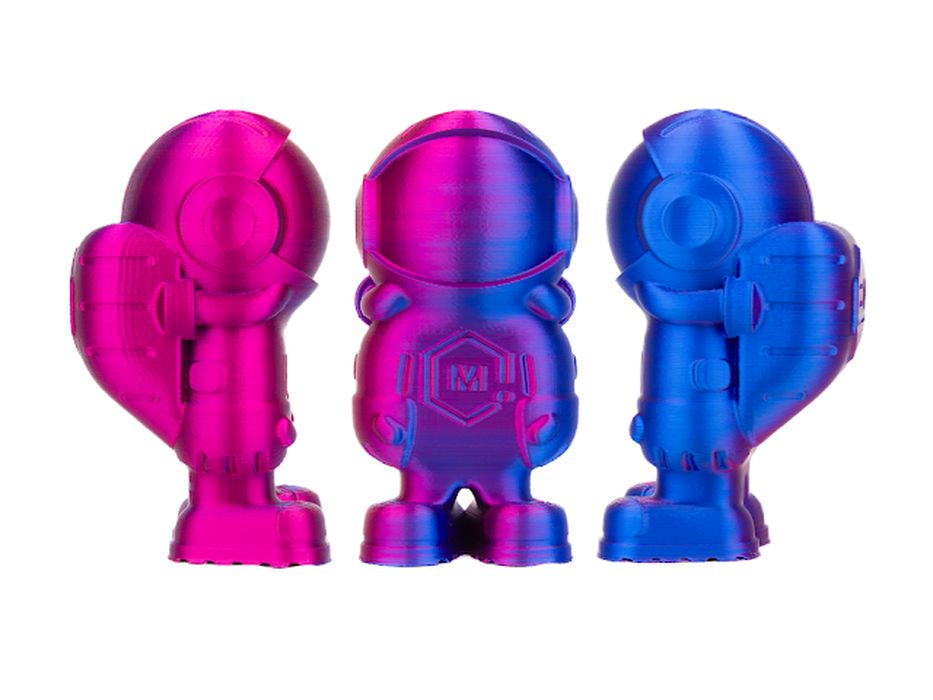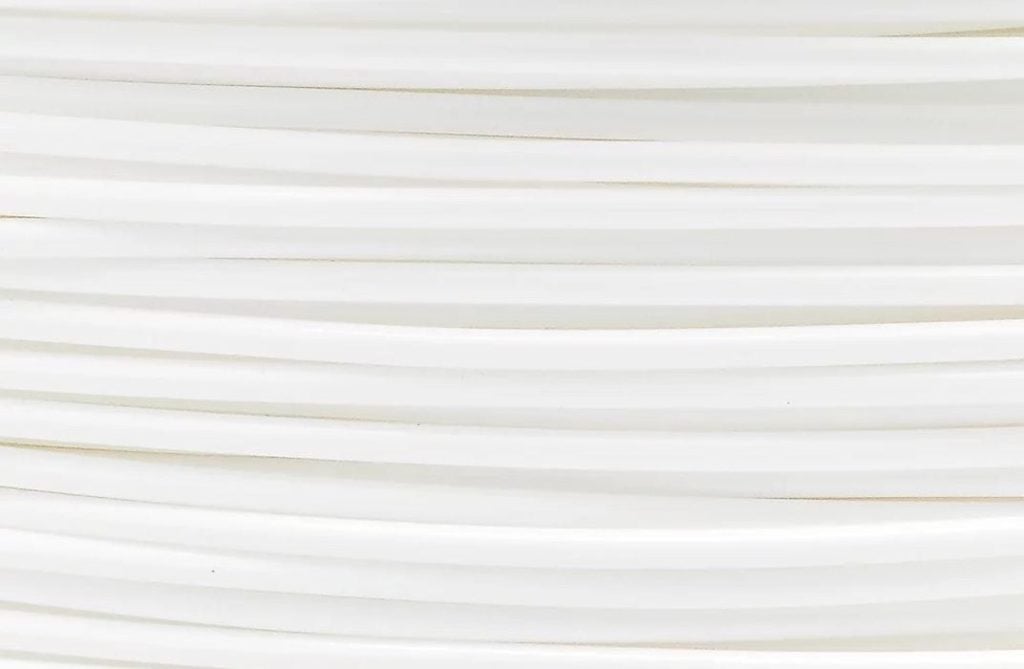
Several new AM materials were announced in the past week.
We often receive notes from manufacturers that have developed new and unique materials, but most times the news value is relatively low and these do not warrant a story on their own. However, we thought we might bundle together several material announcements into one post, this one, for your review.
Matterhackers Quantum PLA
Matterhackers, one of the largest resellers of 3D printers and materials, announced the limited availability of “Quantum PLA” filament. This is a mostly-normal PLA, but with extraordinary visual properties.
It is a color-blending material that’s quite unusual. If you print an object, it will appear with a different color depending on which direction you look (See image at top for an example).
I don’t quite understand how this stuff works, but Matterhackers recommends printing a calibration object first to determine directions. They say:
”Before starting a big print, we recommend printing an alignment coin that will tell you exactly where the color change line is on your specific printer and filament setup. The angle will be different for every printer setup, but we have found that if the printer and filament stay in the same orientation, the alignment doesn’t change from spool to spool.”
Finally, they say they are having a hard time keeping this material in stock, and I can totally understand that given the highly unusual nature of the filament.
i.Materialise Basic Resin

Materialise will be making a change to their standard gray resin used in their 3D print service: the price is going up. However, they have released an alternative: Basic Finish gray resin. They say it “still retains the marks from the support structures”, but will not suffer a price increase. The original gray resin will be sold as “Gray Resin support marks removed”.
Filament Innovations CPX

Filament Innovations, a US-based company supplying both filament and pellet materials for 3D printing, announced the availability of CPX material. They explain:
“CPX is a high-impact, co-polymer polypropylene filament, specifically designed and developed for the prosthetics industry for high-flow FDM 3D Printing needs, utilizing the Typhoon extrusion system from Dyze Design.”
And:
“This unique polymer has never been put into filament form before and we are proud to be producing it in house, on our own extrusion line. All testing and calibration of this material has only been on on our ICARUS units using the high-flow Typhoon extrusion system from Dyze Design. We cannot guarantee success in printing when not using a Typhoon extrusion system.”
This material sold on massive 1.7kg spools priced at US$160 each. However, due to the lighter density of CPX, it’s said to be the equivalent of 2.3kg of PETG in volume.

Quantum PLA changes color based on the tool head direction and object face orientation during extrusion, not depending on the direction of view. It’s coextruded so half of the filament cross section is one color and the other half is the second color. It’s a little bit like the multi-colored toothpastes.
When laid down in one direction, one color will be one the external face of, say, a West-East perimeter wall, but on a East-West wall, the other color will be outer most. If the tool head reverse the color gets reversed, but most slicer maintain perimeter print direction most of the time.
I don’t print that many ornamental objects, but I was intrigued to try Quantum. After getting amazing results printing a rose, I expanded my palette to four color combinations (despite it being hard to get).